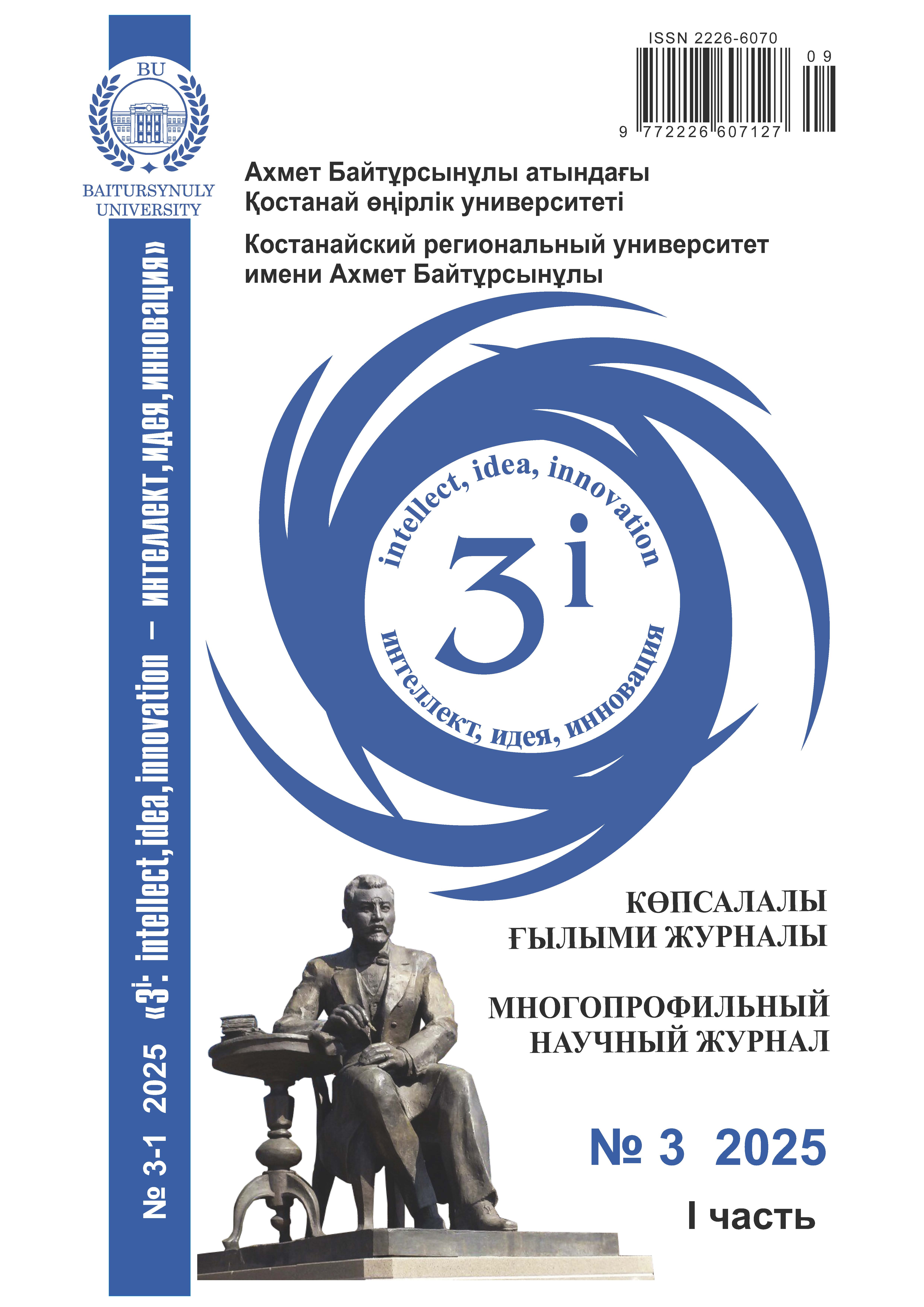СОЛТҮСТІК ҚАЗАҚСТАННЫҢ АУЫЛ ШАРУАШЫЛЫҒЫ МАҢЫЗЫ БАР СУ ҚОЙМАЛАРЫНЫҢ ТҮПТІК ШӨГІНДІЛЕРДЕГІ ОРГАНИКАЛЫҚ ЗАТТАРДЫҢ ҚҰРАМЫН БАҒАЛАУ
DOI:
https://doi.org/10.52269/KGTD2531133Кілт сөздер:
органикалық заттар, ауылшаруашылық мақсаты, су қоймасы, түптік шөгінділер, рентген-флуоресцентті спектрлік талдау, корреляциялық тәуелділікАңдатпа
Бұл мақалада Солтүстік Қазақстанда орналасқан Жоғарғы Тобыл және Қаратомар су қоймаларының жағалау аймағындағы түптік шөгінділеріндегі органикалық заттардың құрамын зерттеу нәтижелері келтірілген.Дала жұмыстары қыс мезгілінде мұз қабаты астынан сынама алудың бейімделген әдістерін қолдану арқылы жүргізілді, бұл төмен температура жағдайында сенімді деректер алуға мүмкіндік берді.Зерттеу барысында шөгінді үлгілеріндегі органикалық заттардың сандық көрсеткіштері анықталып, олардың сапалық құрамы мен су ортасына ықтимал әсері бағаланды.
Алынған мәліметтер қоңыржай климаттық белдеудегі тұщы су қоймаларының түптік жүйелерінің экологиялық жай-күйін бағалау үшін анықтамалық материал ретінде қолданылуы мүмкін.Сонымен қатар, нәтижелер рентгенофлуоресценттік спектроскопия әдісімен қатты фазалы фракциялардың уыттылығын бағалау мен экспресс-талдау жүргізуді қоса алғанда, кешенді мониторингті ұйымдастыру және жүргізу бойынша әдістемелік ұсынымдарды әзірлеу үшін маңызды практикалық мәнге ие.Аталған су қоймаларының су ресурстары ауыл шаруашылығында кеңінен пайдаланылатынын ескере отырып, зерттеу нәтижелері агроэкологиялық шараларды жоспарлауда және аймақта тұрақты жер пайдалануды қамтамасыз етуде де қолдануға болады.Сонымен қатар, түптік шөгінділерді органоминералды тыңайтқыш ретінде немесе бұзылған жерлерді қалпына келтіру мақсатында әлеуетті ресурс ретінде пайдалануға болады.




